Trip to Nepal
October 2006
Day 2 - Around Kathmandu
I visited three nearby sites on my second
day in Kathmandu, before heading out for Trekking. It was a hot and sunny
day, and I had selected Swoyambhunath (a Hindu/Buddhist temple area),
Bhaktapur (a very old city which was once one of the three 'capital' cities of
Nepal), and Pashupatinath (a Hindu area by a Ganges tributary where cremations
are performed)
Swoyambhunath
is in the western part of the city, and is also known as the Monkey temple.
But monkeys were even more plentiful in Pashupatinath, so perhaps they're just
endemic to temples. This is a
UNESCO World Heritage site.
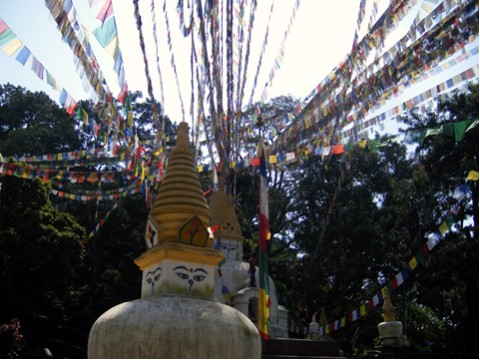 Buddhist
prayer flags are rampant around Buddhist temples, and I was to see them in
profusion in the higher elevation areas, which are primarily Buddhist. I
never got tired of them, and even brought some home to put over my deck.
Each square has Sanskrit and images on it; I have no idea what it says, but
that's hardly the point, is it?
Buddhist
prayer flags are rampant around Buddhist temples, and I was to see them in
profusion in the higher elevation areas, which are primarily Buddhist. I
never got tired of them, and even brought some home to put over my deck.
Each square has Sanskrit and images on it; I have no idea what it says, but
that's hardly the point, is it?
The eyes and nose are copied in many other
temples, and you can buy t-shirts in Thamel and Pokhara with this image.
And I did.
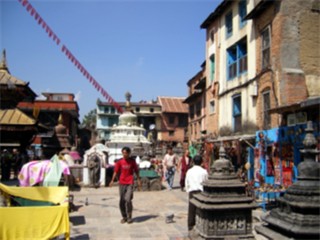
P
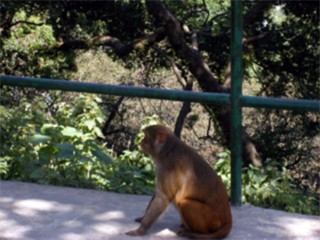
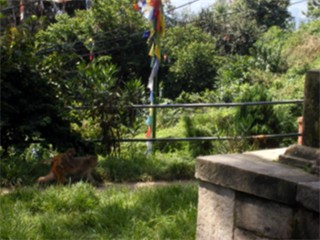
What's a temple without monkeys? Everyone had the
same advice about the monkeys - don't feed them or they'll turn on you when you
stop giving them food.
From here, I went to
Bhaktapur, a 14th century town that features
lots of ancient teak, which I was told never rots and is avoided by termites.
No matter where you go, you hear "Namaste, come see - no charge just for
looking!" And when they eventually stop leaning on you as you walk, they
say " No problem, I'll see you soon and you'll buy!" This makes it
difficult to even look at anything without attracting way too much attention;
it's like attracting flies with honey, and I'm the honey. This is also a
UNESCO World Heritage site.
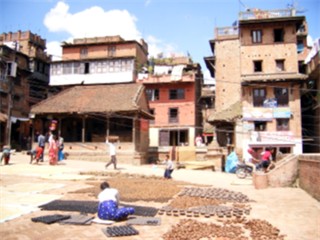 |
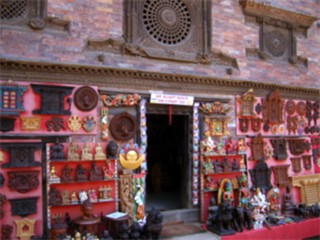 |
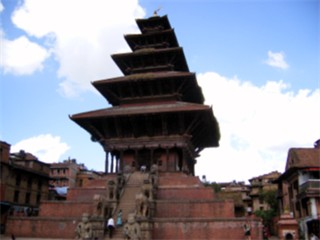 |
|
Drying food in the sun |
Teak products for sale |
Temple in center of town |
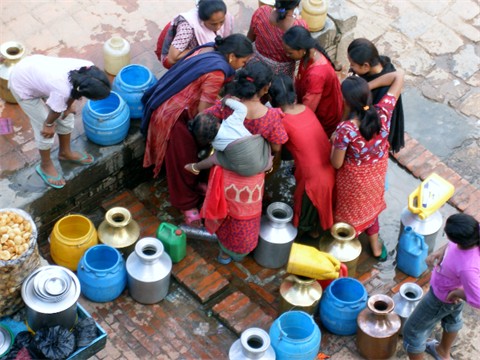 |
From the vantage point of a 3rd
floor restaurant in town, I looked down at the local public water
facility. These facilities are in every town and provide water for
drinking and for doing laundry.
It looks like plastic is competing
with metal as the jug of choice. Almost all the women, whether in
town or out in the countryside, dress colorfully and in clean clothes.
|
Finally I was taken to
Pashupatinath, a temple for
Shiva on the Bagmati River.
This is a very holy area for Hindus and is the most widely used place of
cremation for the deceased in Nepal. This is also a
UNESCO World Heritage site.
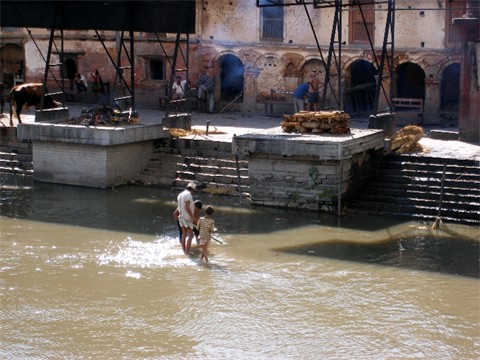 |
Funereal
cremations on this side of the river (Hindus only), and some people
scavenge for the parts of the body (rings?) that survived the purifying
flames. |
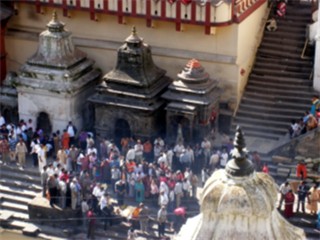 |
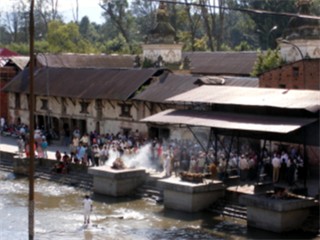 |
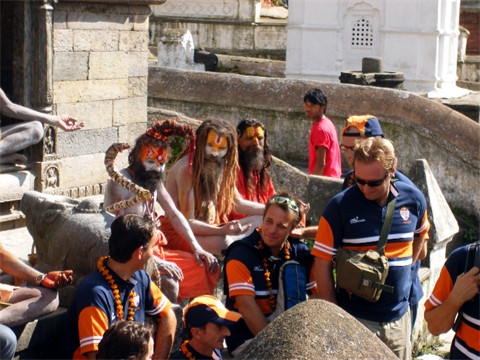 |
These
three guys dress up like this and charge for pictures; I saw them in
someone else's pictures who told me that. |
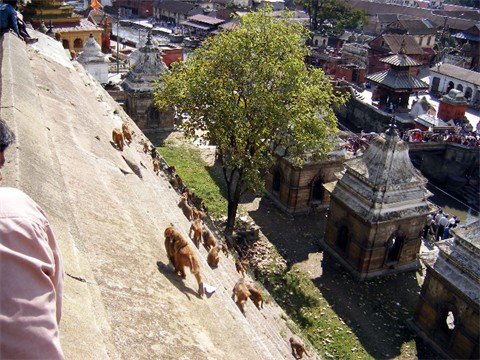 |
Monkey
troop on the move - the crowds were big on this day because some famous
people had died in a helicopter tragedy. |
Day 3 - Trip to Besisehar
 Buddhist
prayer flags are rampant around Buddhist temples, and I was to see them in
profusion in the higher elevation areas, which are primarily Buddhist. I
never got tired of them, and even brought some home to put over my deck.
Each square has Sanskrit and images on it; I have no idea what it says, but
that's hardly the point, is it?
Buddhist
prayer flags are rampant around Buddhist temples, and I was to see them in
profusion in the higher elevation areas, which are primarily Buddhist. I
never got tired of them, and even brought some home to put over my deck.
Each square has Sanskrit and images on it; I have no idea what it says, but
that's hardly the point, is it?